How a Musician-Turned-Marketer Scaled Fomo to $100K MRR
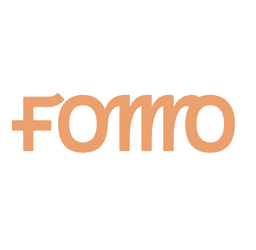

Business Description
Table of Contents
Navigate through the case study sections
Executive Summary
Case Study Content
Origins of Fomo
At 16, Ryan Kulp wasn’t thinking about startups or software. He was touring in a screamo band, not applying to college. At 18, he left home without telling anyone and started bouncing between couches. Eventually he enrolled in school, pulled a 4.3 GPA, and still kept chasing music in Atlanta. He wrote a book, launched it on Kickstarter, and it bombed. That failure nudged him toward tech, and by 2013, he landed a marketing job at ShuttleCloud, a Techstars startup. He jumped from one early-stage company to another, YC-backed Keychain Logistics, his own agency Sprinkle Labs, then GrowthX, a VC firm in San Francisco where his job was growth marketing for portfolio companies.
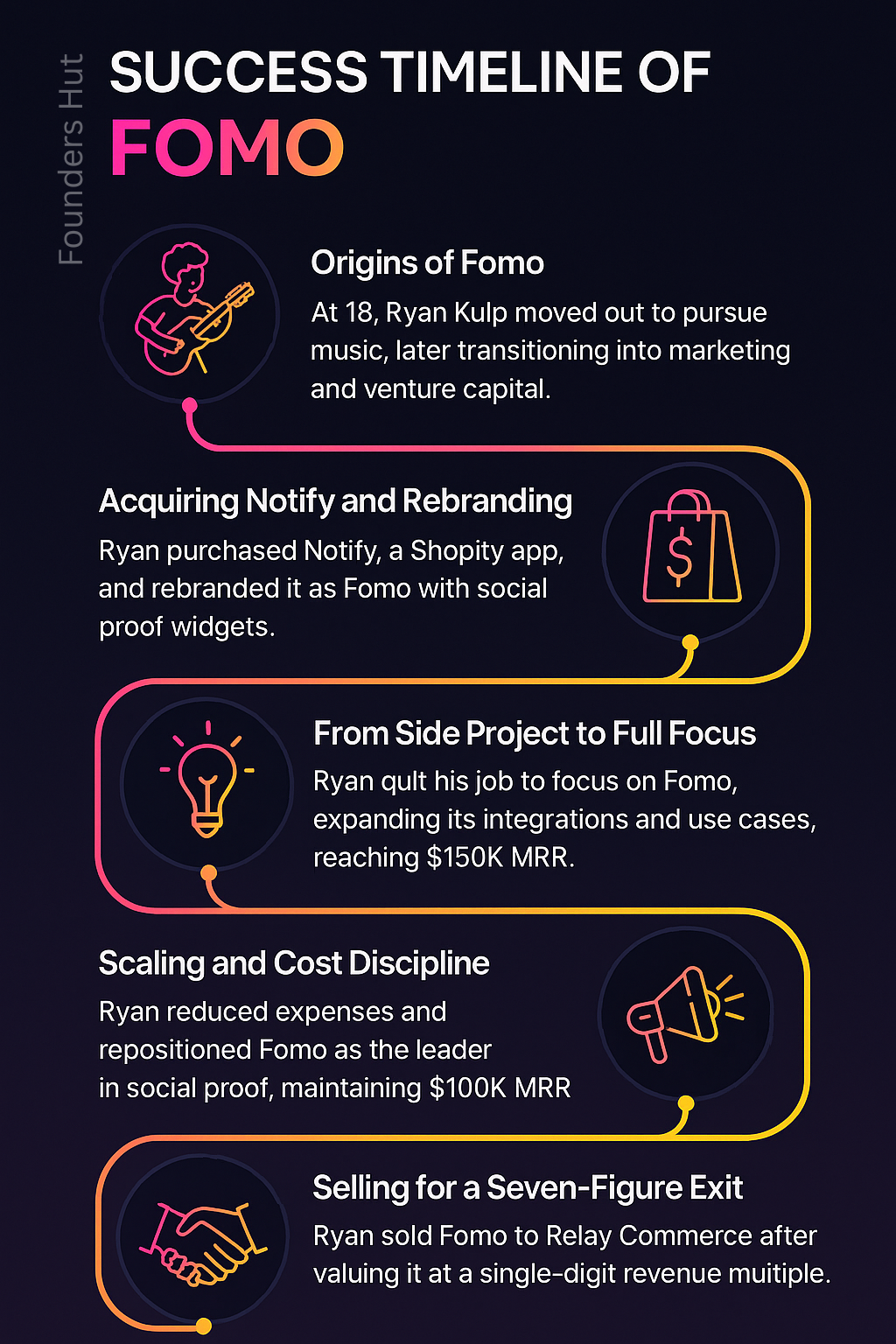
Acquiring Notify and Rebranding
While working at GrowthX, Ryan came across Notify, a basic Shopify plugin that displayed customer actions like recent purchases. The founder wasn’t looking for investment; he wanted out. Ryan told his friend Justin Mares in passing, and Justin replied, “We should buy it.” That was that. They structured the deal with seller-side financing. No banks. No VCs. Just a simple setup: pay monthly from the app’s revenue. If they missed two payments, the original owner could take the business back, no questions. That clause, oddly, made the seller more comfortable. Ryan and Justin secured 100% ownership from day one and handled all the risk from there. A few thousand bucks out of pocket, plus a Chase credit card they maxed out for the rebuild.
They rebuilt everything - new UI, new code, new name. “Fomo” was catchier. Cleaner. And when Ryan first saw the widget live on a site, he had a strong gut reaction: “What is that? I need to know.” That was his entire thesis. If it grabbed him, it would grab other marketers too. He didn’t run any complex model to calculate CAC vs LTV. He just had conviction and a working product.

From Side Project to Full Focus
Ryan kept his day job in venture for a while. Nights and weekends were for Fomo. The early growth came from e-commerce founders on Shopify who were trying anything that might move the needle. Then came requests: ClickFunnels, Mindbody, BigCommerce. They built integrations for all of them. Local dentists started using Fomo. So did gyms. Digital course creators. By now, the product wasn’t just a widget, it was a flexible notification engine that plugged into nearly any stack. They launched an ad network, gave users credits to try it, and added rollover billing just like Google Ads. It started looking like a real company. Not massive, but stable, and growing in chunks.
Scaling and Cost Discipline
Fomo eventually hit $150K MRR. But costs ballooned. At one point, they spent $135K a month: salaries, contractors, and a team yacht trip across the Adriatic. Yeah, a yacht. They raced in the Barcolana 50 and stopped through Croatia, Slovenia, Italy. Fun? Sure. Smart? Maybe not. Ryan pulled things back. Headcount was trimmed from 12 to 5 full-time and 3 part-time. Some of the original $4/month customers never upgraded, so the real revenue per customer was low. They launched new pricing: 25+ plans, ranging from $19 to $2,000 a month, based on site traffic and notification volume. Enterprise users started trickling in. Most didn’t need hand-holding. They wanted results. The product delivered.
By reframing Fomo as the default choice for social proof popups, “the Coke of notification bars” organic traffic and conversions improved. Shopify called it the #1 Black Friday app. And even with flat top-line growth, the business got healthier. Fewer people. Better margins. More control.
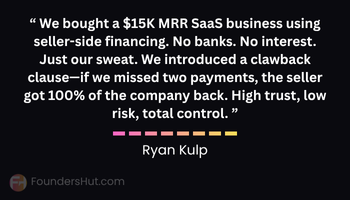
Selling for a Seven-Figure Exit
At some point, Ryan stepped back. He hired a CEO, moved to a ranch, and started thinking about land in Yellowstone. When offers came in, he wasn’t chasing multiples. He wanted the right vibe, someone who understood how SaaS actually runs. Relay Commerce acquired Fomo in a private deal. It was clean. No earnouts. Just a check. He didn’t disclose the final price, but given Fomo was doing nearly $100K/month in MRR, and they had the Fomo.com domain (which cost $105K on its own), it wasn’t a small number.
By the way, that domain used to belong to a foam insulation company. Ryan followed their site for months until a private equity firm acquired it and rebranded. That’s when he swooped in. Deal done through friends, cash via private debt. They paid off the $105K in less than a year. No angel round. No drama. Just patience and a willingness to get it done.
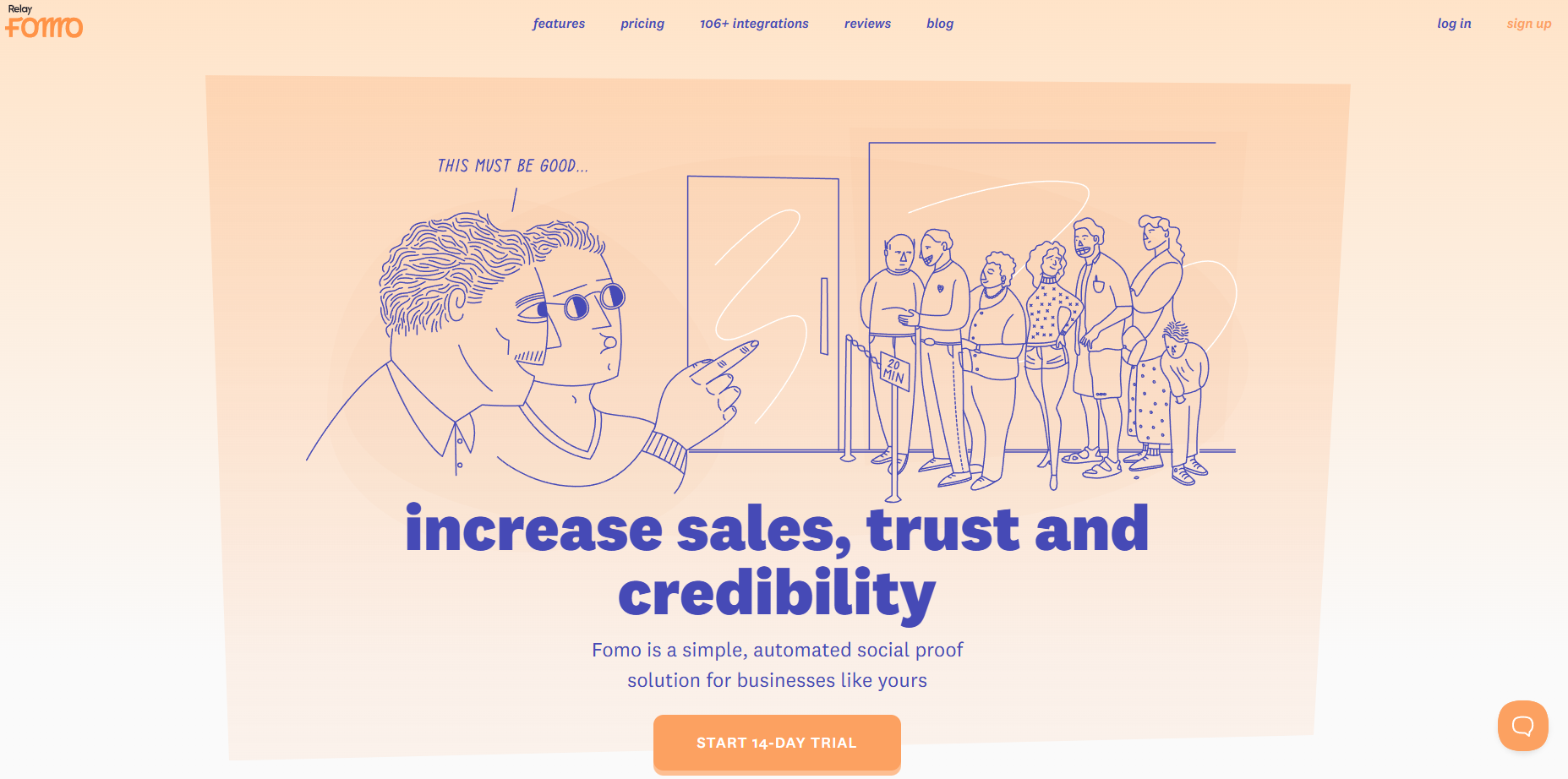
Next Chapters: Fork Equity, Courses, and Hardware
After the sale, Ryan co-founded Fork Equity with his wife. They’ve since acquired 15+ small SaaS and info product businesses, all cashflow positive. No institutional LPs. Just a private BCC list of high-net-worth friends who co-invest occasionally. One of their biggest wins? A no-code course on micro acquisitions, now generating $78K/month. No support. No bugs. Just Stripe and a dashboard. The entire thing runs itself.
He also built TRMNL, a minimalist e-ink productivity device for task management. Over 1,800 units sold in months. And when they want to unplug, they head to Hacker House, a remote retreat cabin for founders. Somewhere quiet to think, write, and plan the next thing. Ryan still writes code. He’s still online. But now it’s on his terms, no investor decks, no board meetings, no growth theatre.
Business Plan
Market Problem
Many online businesses struggle to establish trust and credibility with potential customers. Without visible proof of social engagement,…
See the full market problemSolution
Fomo addresses the need for social proof by offering a SaaS solution that displays real-time notifications of customer actions on…
See the full solutionTarget Market
E-commerce Businesses
Online retailers seeking to boost their conversion rates through social proof notifications.
Digital Course Creators
Individuals or companies selling online courses who want to demonstrate credibility and engagement.
Competitors
Proof
Focuses on social proof notifications but lacks the extensive integrations that Fomo offers.
TrustPulse
Offers similar social proof tools but is primarily geared towards WordPress users.
Competitive Advantage
Fomo’s primary advantage is its seamless integration with multiple e-commerce platforms, making it accessible for a wide range of users.…
See the full competitive advantageSales and Marketing
Fomo employs a mix of content marketing and direct outreach to target potential customers. By creating valuable content that outlines the…
See the full Sales and marketing planSuccess Milestones
Launch MVP
Publish a minimal but usable product and onboard 50 beta users.
Secure Initial Partnerships
Integrate with Shopify and ClickFunnels for wider reach.
Key Takeaways
- 1Acquiring and rebranding an existing app let Ryan skip early build risks and move straight to product-market fit with Fomo.
- 2Building integrations beyond Shopify, into ClickFunnels, Mindbody, and booking tools, unlocked new markets and use cases.
- 3Maintaining strict cost discipline was as vital as revenue growth: trimming headcount and cutting nonessential expenses.
- 4Positioning Fomo as the undisputed social proof leader drove organic word-of-mouth and consistent $100K MRR.
- 5Selling to a buyer with shared values and startup experience ensured Fomo’s culture and brand legacy continued.
- 6Ryan applied the same tactics post-exit at Fork Equity and in launching TRMNL, proving the model is repeatable.
Tools & Technologies Used
Premium Content Locked
Subscribe to access the tools and technologies used in this case study.
Unlock NowHow to Replicate This Success
Premium Content Locked
Subscribe to access the step-by-step replication guide for this case study.
Unlock NowInterested in Being Featured?
Share your success story with our community of entrepreneurs.
Explore More Case Studies
Discover other inspiring business success stories
How a 58-Year-Old Investor Launched a $45 Blanket Hoodie Side Hustle
In this detailed case study, 58-year-old investor and entrepreneur Mark Tilbury built a one-product Shopify store called...
Kozee Comfort

How Jason’s ConvertCase Tool Turned an Hour’s Work into $20K/Month
ConvertCase began as a quick hack to silence all-caps emails and evolved into a full suite of text, image, and data conv...
ConvertCase
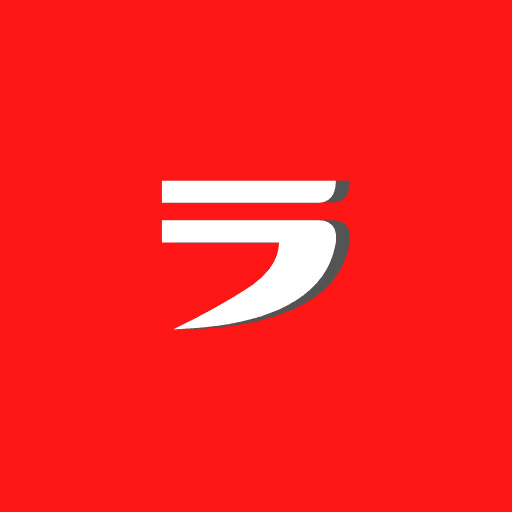
How Ramune VPN Won Japan's SEO Game and Sold for $310K in 2 Years
Daisuke, founder of Ramune VPN, spotted a gap in Japan's VPN review space, tackled it alone, and scaled his website to h...
Ramune VPN
